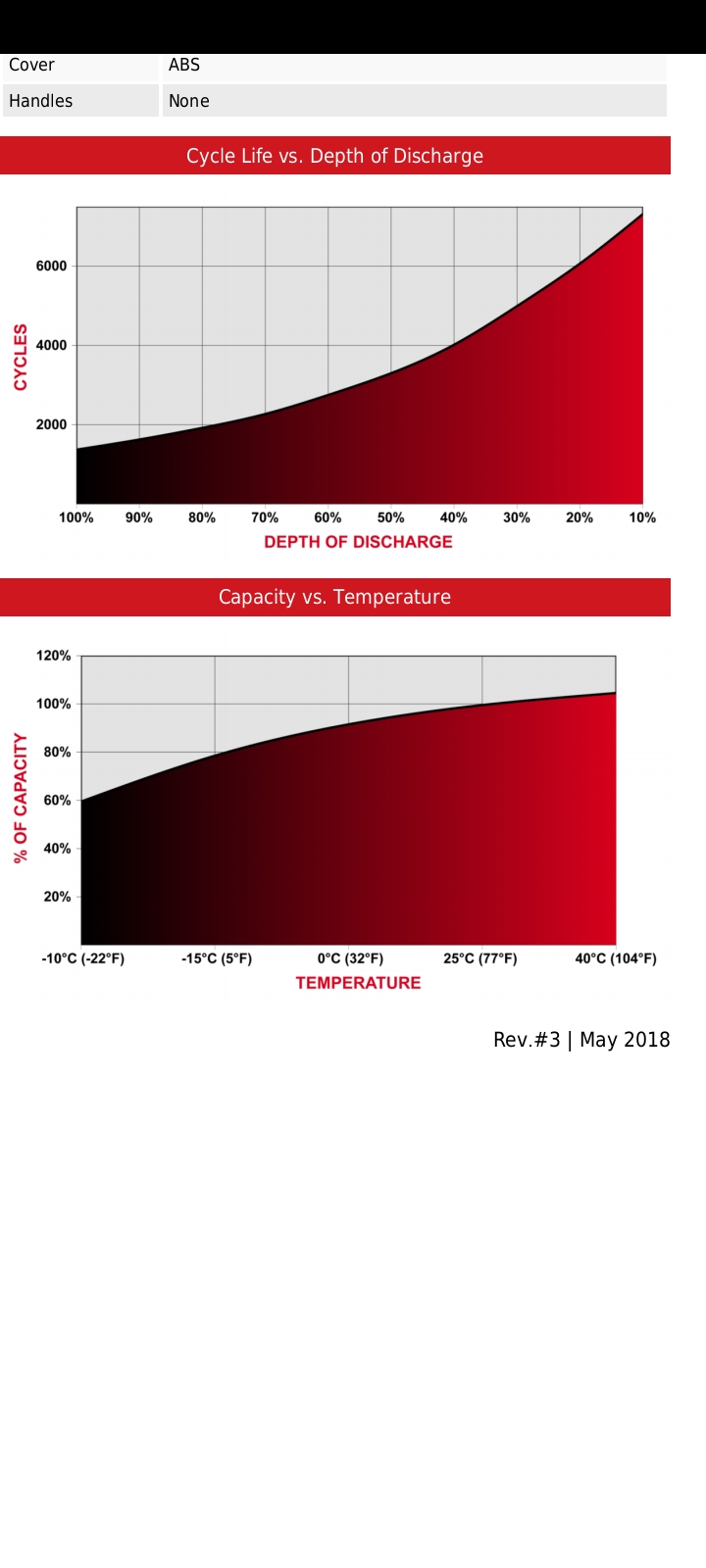hello, after 2 years of use and study I noticed fews things that Victron products can improve a lot with little effort.
1) the count of the cycles of the smartshunt and of the various models of BMV.
A cycle is only counted under 65% ..
This is incorrect in my opinion for lead acid batteries one should count a cycle even at 90% or 85%.
IN my RV the system is correctly sized, the batteries are agm for 178ah, and the photovoltaic of 450 watts.
I live in a pretty good climate and never run out of batteries below 80/85%.
So no cycle counts, apart from synchronizations.
This also leads to an inaccurate reading of the average discharge.
In fact, the average discharge is based on cycles and not on synchronizations.
In fact, I have average discharges of 25/30 ah and this is not detected, since my battery pack is 178ah and I never discharge below 65%. actually never below 80%.
2) it would be nice if the victron Connect app for the smartsolar also displays the internal temperature of the solar controller.
This temperature is certainly detected by the smartsolar but is not displayed.
3) it would be nice in the "trends" section to be able to cross the curves of 3 values and not just 2.
For example "battery voltage + battery current + soc".
it would be nice if the AH count was implemented in the historical trends of the smartshunt. Instead it is the only data that is only available in real time.
4) it is a pity that a small economic accessory is not available that records in a memory all the data of historical trends in CSV format to be exported.
The trend is only available on the App for 46 days and the possibility to save the history every 30 days (but only manually) from the smartsolar.
When I had the Epever-based system, a simple object costing 20 euros would record months of data at a time in. CSV.
I hope these suggestions can be taken into consideration, at least in part… at least the talk of battery monitor cycles.

 that have a difference in duration between 2,000 cycles at 30% DOD and over 4,000 cycles at 10% DOD.
that have a difference in duration between 2,000 cycles at 30% DOD and over 4,000 cycles at 10% DOD.